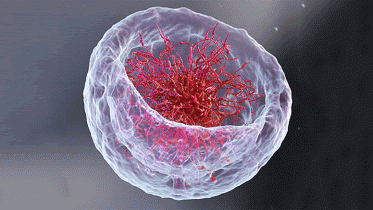Beyond Dopamine: New Reward Circuitry Discovered

Photo Courtesy of SciTech Daily
By Angela Hickey
Scientists may have discovered the key to overcoming addiction and psychiatric disorders, deep inside the netherworlds of our own brain circuitry.
Dopamine, a neurotransmitter that is released when the brain expects a reward, could come be from eating pizza, dancing, shopping, or sex. It is also considered crucial for the rewarding effects of drugs, but its role in substance abuse and addiction is much less clear.
By studying the neural pathways and reward circuitry of the brain, scientists have been searching for a way to utilize something beyond dopamine, which could be key in overcoming addiction and other psychiatric disorders.
In a paper published in Nature Neuroscience, researchers from the Bruchas Lab at the University of Washington School of Medicine have done extensive research on our reward pathways and found another pathway beyond dopamine. Through this research, The Bruchas Lab is expanding knowledge of the inner workings of the brain and identifying treatments for psychiatric diseases.
“This study opens new avenues to understanding reward circuitry that might be altered in abuse of nicotine, opiates, or other drugs as well as neuropsychiatric diseases that affect reward processing including depression,” said corresponding author Dr. Michael Bruchas, professor of anesthesiology and pain medicine at the University of Washington School of Medicine who runs the Bruchas Lab.
In this study, researchers found that approximately 30% of cells in the ventral tegmental area (VTA) are gamma-Aminobutyric acid (GABA), which is the main inhibitory mammalian central nervous system. VTA GABA neurons have increasingly been recognized as influential participants in the reward and aversion system, as well as potential targets for the treatment of addiction, depression, and other stress-linked disorders.
“What we found are unique GABAergic cells that project broadly to the nucleus accumbens, but projections only to a specific portion contribute to reward reinforcement,” said co-lead author Raajaram Gowrishankar, a postdoctoral scholar working in the Bruchas Lab and the Center for the Neurobiology of Addiction, Pain and Emotion.
Co-lead author Ream Al-Hasani with the Center for Clinical Pharmacology and Washington University compared the groups’ findings to building with Legos and figuring out how one piece connects to another: each piece of the puzzle can take multiple years before being able to fully connect.
Gowrishankar said the findings are allowing scientists to understand certain subregions of the brain which were previously untouched and allow scientists to visualize how specific neuromodulators are released during reward processing.
Realistically, researchers will be able to highlight the heterogeneity, or diversity, in the brain.
“It’s really important that we don’t think of structures in the brain as monolithic,” said Gowrishankar. “There’s lots of little nuance in the brain. How plastic it is. How it’s wired. This finding is showing one way how differences can play out.”







